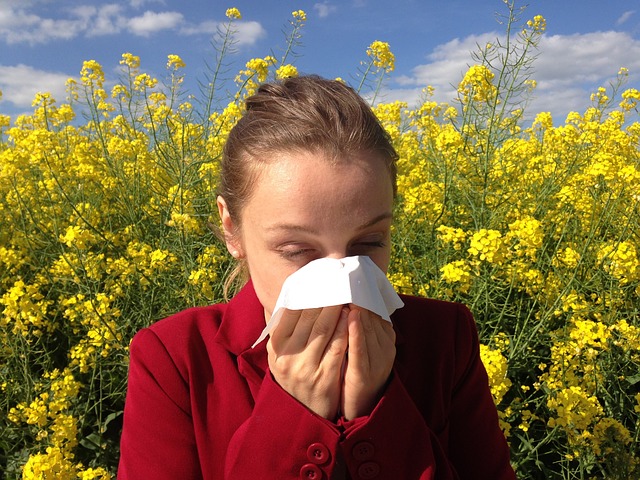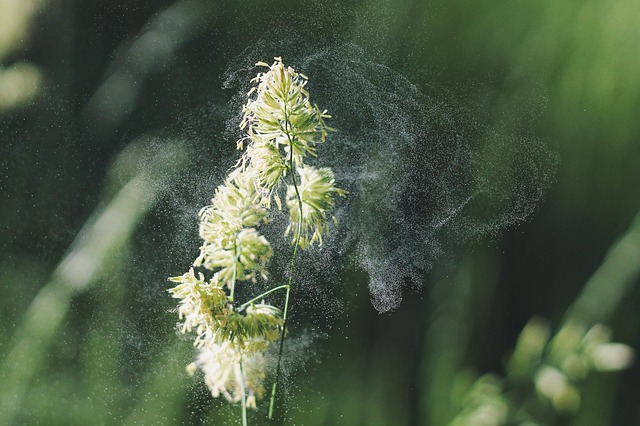Allergies can present in anyone at any time in their life. However, allergic asthma commonly affects predisposed asthmatics, in addition to asthmatics suffering from seasonal allergies. Some patients might see relief from their symptoms after receiving two phases of allergy shot treatments. Others might have their allergy related symptoms disappear.
What Is Allergic Asthma?
Allergic asthma is an immune system response to allergens that produces any severity of an asthma attack. Your type of asthma before the allergic reaction doesn’t matter; a person with exercise induced asthma can have an allergic asthma attack.
Keep in mind, your body can trigger an allergic reaction to anything at any time. The cause doesn’t need to be airborne, but they’re generally the largest culprits since asthmatics already have sensitive airways.
Some common triggers:
● Pollen
● Mold spores and fragments
● Dander
● Dust and cockroach feces
● Smoke, even from a fireplace
● Cold air
● Chemical odors
● Pollution
● Dust
Allergic Asthma Symptoms
The attack can occur alone or in conjunction with other asthma or allergy symptoms:
● Cough
● Wheeze
● Shortness of breath
● Tightness in chest
Who Is At Risk?
Two major factors are family history and a history of severe allergies. However, these factors increase your risk of allergic asthma and are not a guarantee. You can also have no family history or a history of allergies and have allergic asthma.
Testing rules out and discovers triggers. The most common methods are a blood test (IgE) and a traditional skin prick.

Controlling Allergens
Prevention is the safest medicine, but unless you live in isolation and filter all of your air, you cannot completely allergen proof your life. You can greatly reduce allergens in your home and environment after you’ve discovered your triggers. Even if you receive treatments, the following tips are good practice to keep allergies under control, which in-turn makes your treatments more likely to be successful.
Tips to reduce allergens:
• Stay inside when pollen alerts signal high levels
• Don’t use spray air fresheners or heavy perfumes
• Use HEPA filters in your home and change them often
• Run your exhaust fan while cooking and after showering
• Use allergen-proof covers on mattresses, box springs, pillows
• Wash bedding weekly in hot water
• Remove curtains, carpets, and un-washable or protected upholstered furniture to limit dust and dust mite feces
• Buy only washable stuffed animals for children
• Control humidity—aim for 40% or less and use a dehumidifier or air conditioner to control moisture
• Get tested for pet allergies—there are no hypoallergenic breeds of cats or dogs. Depending on the severity of the allergy, you might be able to simply keep pets of your bedroom. Avoid sprays and dusts with unfounded claims to reduce dander; they’re also possible triggers too.
• Keep bathrooms and kitchens dry to prevent mold and cockroaches
• Check for signs of cockroaches and call in a professional
• Avoid electronic air purifiers—they create ozone and that can lead to inflammation in your airway
• Wear a HEPA filter mask outdoors to reduce breathing in pollen and mold
Immunotherapy
Immunotherapy has been used for over 100 years to treat allergy and allergic asthma symptoms. It’s useful in children with allergic rhinitis, which can progress into asthma. In scientific studies, dose and treatment length have the most bearing on whether treatment is effective.
Your shots or drops will contain small amounts of your allergens. In turn, your immune system builds a tolerance to the injected particles, and over time, you can expect to see a reduction in allergy symptoms. In cases of allergic asthma, your breathing symptoms associated with allergies should also improve.
Subcutaneous Immunotherapy (SCIT)
A common method to combat allergic asthma is an allergy shot. Shots are not for occasional allergies. However, if you’ve had symptoms for longer than 3 months, you are likely a candidate. The varied length of treatment and dosing depend solely on the patient.
To begin, your allergist will administer frequent shots in the buildup phase, which typically requires one or two shots per week. Results are seldom immediate and it might take you three months to a year to see improvement. They gradually increase your dose until you see relief and enter the maintenance phase. At this point, you will still require shots every two to four weeks.
Total or partial relief can require 3-5 years of immunotherapy. Your allergist can determine the best course of treatment for you.
Sublingual Immunotherapy (SLIT)
The FDA has currently approved SLIT for ragweed, northern grasses, and dust mite allergies. While they’re called drops, they’re a tablet form of treatment and work the same way as allergy shots on your immune system. They haven’t been as effective as shots, but they’re an alternative for patients with needle phobias or limited time that restricts them from attending office visits for shots. You can also take the tablets at home after an initial office visit, complete with 30-minute waiting period, to monitor for reactions.
Who Are SCIT and SLIT For?
Allergy shots and drops can benefit anyone with allergies, except food-related ones. It’s a personal choice whether to try immunotherapy. However, for children under five, it isn’t recommended because young children might have difficulty communicating symptoms, reactions, or other important details.
Keep in mind that every person is different and responds differently to treatments. Immunotherapy does take time, but the results can be lasting and less costly when compared to alternatives.
Possible Risks
Immunotherapy isn’t without risks and side effects. Drops or tablets carry much of the same side effects; though, at a much lower severity and rate. However, these generally develop within 30 minutes of the treatment, and there is a required 30-minute waiting period before you can leave the office.
Typical reactions:
• Redness, itching, and swelling around the injection site behind your upper arm.
Less common:
• Increased nasal and breathing symptoms associated with allergies. These can include nasal discharge, watering nose and eyes, sneezing, and itchy nose and eyes. However, this isn’t an inclusive list.
Rare:
• Hives
• Anaphylaxis can occur and includes throat swelling, wheezing, shortness of breath, dizziness, and nausea.
An allergy shot will not cure your asthma, but it can greatly improve or remove your allergy-related asthmatic symptoms. If you’re interested in learning more about allergy-related asthma and the treatments we offer, contact our allergy specialists at Becker Ear, Nose, and Throat today. To call for an appointment, visit website at www.beckerent.com.

This is a collaborative post

